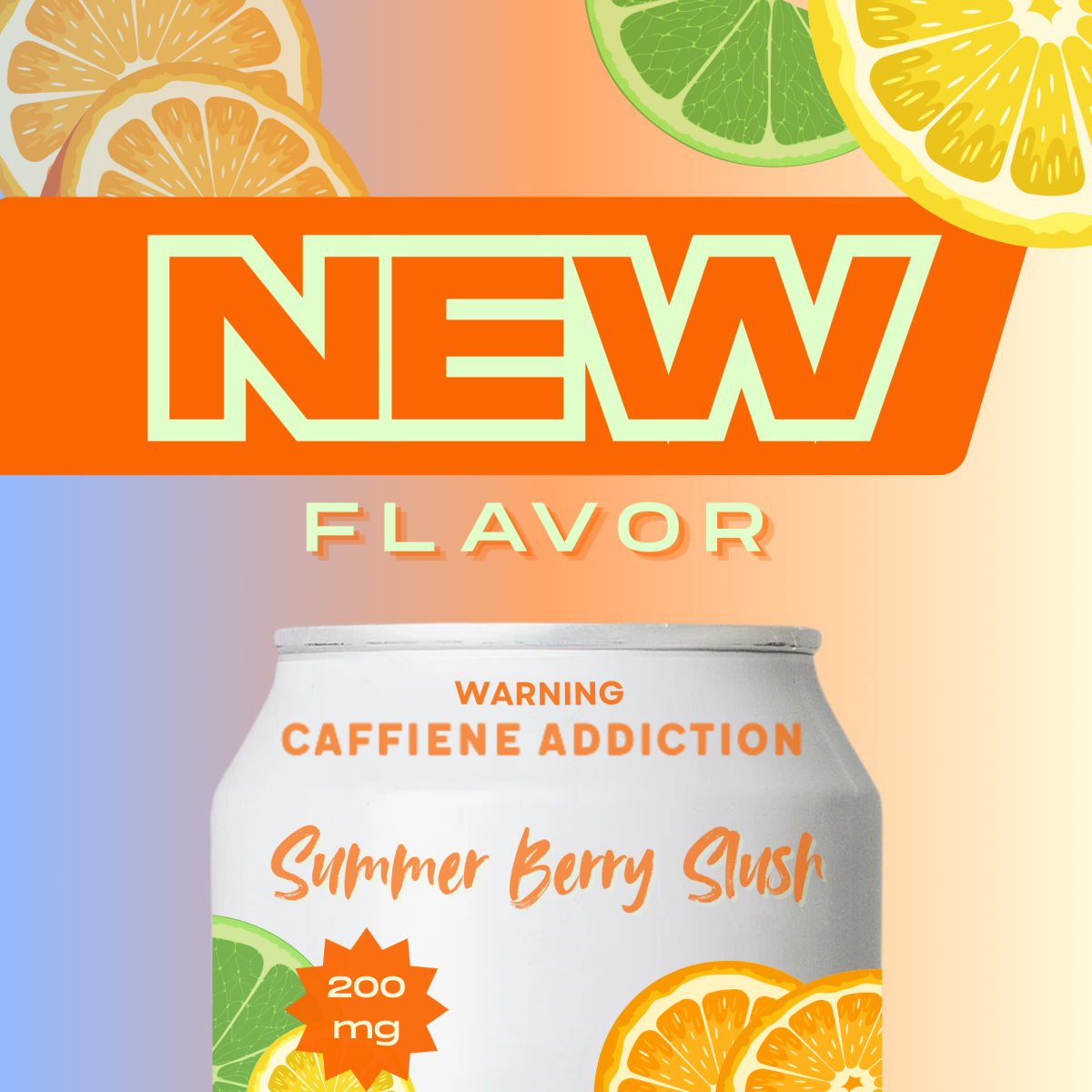
Vector by Luke Petersen
Lining the shelves of gas stations and dollar stores alike, brands such as Monster, Alani Nu, Celsius and Red Bull have become a staple in the backpacks of students across the country. Their reach has expanded further beyond the employed workaholic and made its way into the hands of teenagers.
Hardly a day goes by that I don’t see someone walking around with an energy drink in cans ranging from 12 to 44 ounces. Colorful labels combined with fun flavors hide what’s lurking inside the cans: an inordinate amount of caffeine.
We’re not just talking about the 95 milligrams from drinking a cup of coffee. The 12-ounce Alani contains 200 milligrams of caffeine. Such extreme amounts of the energy-boosting and even addictive chemical can be damaging to its users, especially when they are as young as 13.
Oftentimes, the users are unaware of how quickly they begin to rely on the chemical. Headaches, excessive shaking, increased blood pressure, and stress levels can occur because of drinking too much caffeine or attempting to cold-turkey quit it.
However, you would never guess how quickly you can go from just trying one to drinking at least one a day. And it’s no surprise that younger kids are following this exact cycle.
Alani, for example, is known for its fruity flavors and vibrant can designs. Some of their most famous flavors, such as Pink Slush, Hawaiian Shaved Ice and DreamFloat, all appeal more to children than it does to adults. In fact, when thinking about Alani flavors, there’s almost none that couldn’t be marketed as an ice cream, snow cone or juice — all of which are typically marketed toward children. Oftentimes, these appealing flavors are used in tandem with seasonal marketing and exclusivity, such as Red Bull’s annual summer and winter edition drinks, which can make users feel pressured to buy items before they go off the shelves. This innocent exterior hides the potentially harmful and most certainly unhealthy contents inside.
We saw the same happen with JUUL in the early 2020s. The vape manufacturer was found by the federal government to be purposefully marketing their product to underage users. These users, who were teens at the time, could have built up lifelong addictions because of the enticing nature of the irresponsibly packaged flavored nicotine.
The same is happening now with these energy drink manufacturers. They are seducing young adults into becoming reliant on their product, while not regarding the harm their product causes.
More teenagers need to be aware of what exactly it is they are putting into their bodies. Even when you consume a “healthy” energy drink such as Celsius, the sheer amount of caffeine in each can put you at higher risk of heart issues. Also, many popular energy drinks contain the sucralose compound, which further increases the risk of elevated blood sugar and the potential for a harmful reaction that may cause digestive problems.
If you’re drinking just one highly caffeinated drink a week, you’re likely not going to face serious consequences. But, if you are someone who is drinking upwards of two a day, you may be seriously hurting your health.
Make the wise choice, and don’t be fooled by the companies that only care about their bottom line. Until these companies receive proper government regulation, it’s important you consider what’s best for you and don’t fall for their deceptive tricks.